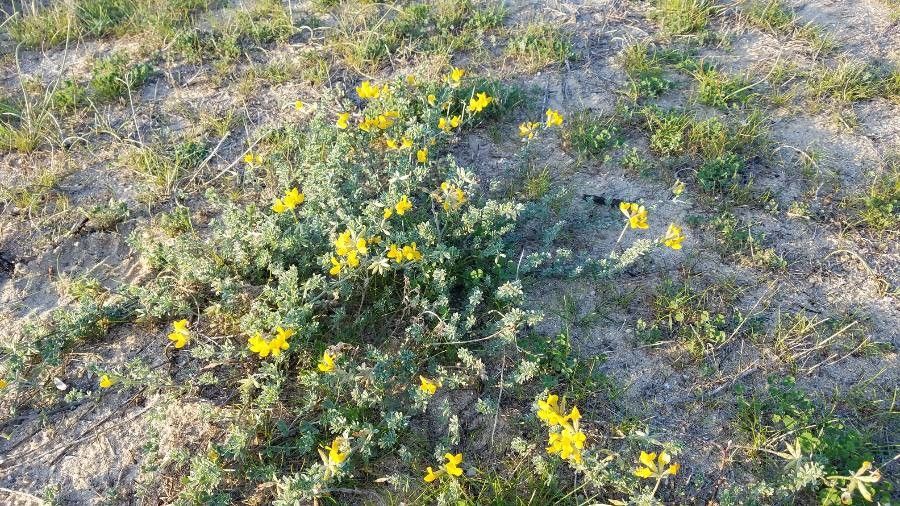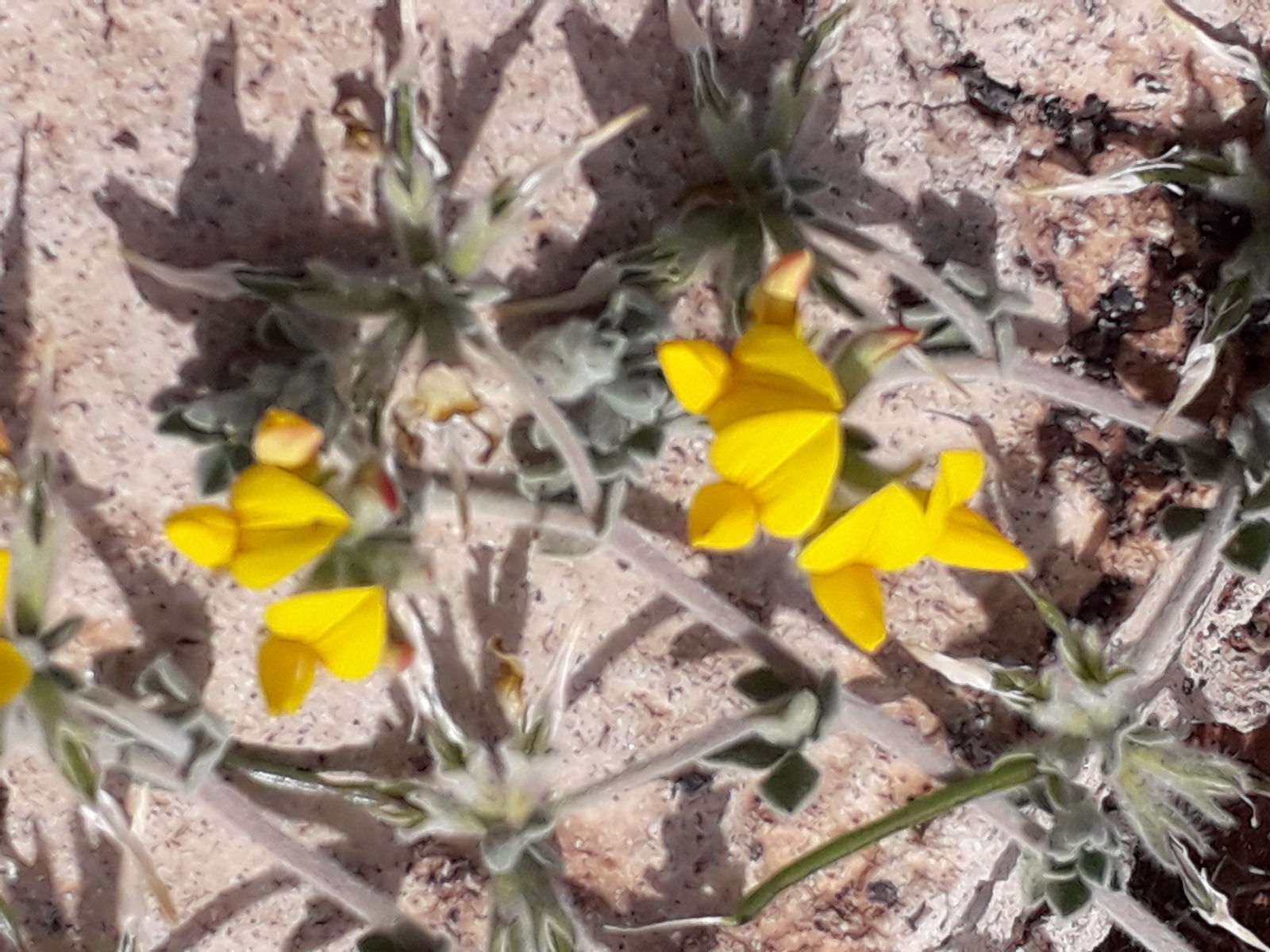Cretan lotus
lotus creticus
Also known as: ["Cretan bird's-foot trefoil","Cretan lotus"]
Overview
A perennial herbaceous plant native to the Mediterranean region, particularly Crete, with yellow flowers and pinnate leaves.
Benefits & Perks
["wildlife attractant (bees, butterflies, birds)","drought tolerant","aesthetic foliage"]
Botanical Classification
| Phylum: | Magnoliophyta |
| Class: | Magnoliopsida |
| Order: | Fabales |
| Family: | Fabaceae |
| Genus: | Lotus |
| Botanical Name: | Lotus creticus |
Plant Characteristics
Basic Information
- Category: Herbs & Weeds
- Suitable Location: outdoor garden bed in a sunny, sheltered spot
- Suitable For:
- Is Weed: No
- Allergenicity: low
Environmental Needs
- Climate: {"temperatureRange":"10–30°C"}
- Hardiness: {"zones":"8–10"}
- Misting: rarely required, only if ambient humidity is very low
- Drainage: Fast-draining to prevent waterlogging.
- Soil Type: Well-draining, sandy loam with organic matter.
Maintenance Level
- Maintenance Level: moderate
- Toughness Level: moderate
- Pruning Frequency: Annually in late winter or early spring; light pruning can be done as needed.
- Pruning Intensity: Moderate; remove up to one-third of old growth if necessary.
Care Details
Ideal Sunlight Coverage:
Full sun (6–8 hours/day); tolerates partial shade in intense summer heat.
Sunlight Tolerance Tips:
Acclimate gradually to intense sunlight; protect from harsh midday sun; adjust placement based on seasonal light intensity.
Care Requirements
Care Difficulty
moderatemoderate
Sunlight
full sun to partial shade
Rotate plant for even light exposure; use sheer curtains to filter intense sun; avoid sudden light changes.
Watering
every 7–10 days during active growth, reduce in winter
Water thoroughly but infrequently; ensure proper drainage; avoid wetting foliage.
Soil
well-draining, sandy loam with some organic matter
pH: Slightly acidic to neutral (pH 6.0–7.0).
Ensure soil dries between waterings; avoid heavy clay soils; amend with organic matter for nutrients.
Temperature
Prefers 65–85°F (18–29°C); tolerates mild frosts but thrives in warm conditions.
Protect from frost; avoid placing near drafty windows; maintain consistent warmth during active growth.
Fertilizing
every 4–6 weeks during growing season
Fertilize only when actively growing; flush soil occasionally to prevent salt buildup; use a balanced formula.
Propagation
Methods
Stem cuttings or division of clumps.
Step-by-Step Propagation Guide
- Take a healthy cutting, apply rooting hormone, plant in medium, keep moist, provide warmth.
Best Time: Spring or early summer when the plant is actively growing.
Environment
Warm, humid environment with indirect light; maintain consistent moisture.
Medium
Well-draining potting mix with perlite or sand.
Hormone
Optional, but rooting hormone can improve success rates.
Timeline
Roots develop in 3–6 weeks; new growth appears in 2–3 months.
Tools Needed
Pruning shears, rooting hormone, small pots, well-draining mix
Quick Tips
Use healthy, non-flowering stems; maintain humidity with a plastic cover; avoid overwatering.
Pruning & Repotting
Pruning Guide
Method
Cut stems back to a healthy bud or lateral branch; avoid cutting into old wood.
Pruning Plan
Remove dead or overgrown stems to maintain shape and encourage new growth.
Tools
Pruning shears, sterilizing solution, gloves
Checklist
Sterilize tools, cut at an angle, remove dead growth, clean up debris
Repotting Guide
Best Season
Spring, before the active growing season begins.
Pot Size
Choose a pot one size larger (1–2 inches wider) than the current one.
Method
Remove plant gently, trim roots if needed, place in a new pot with fresh soil, water lightly.
Suggestions
Repot every 2–3 years or when roots fill the pot; beneficial for growth and health.
Checklist
Check root bound status, prepare new pot, trim roots, add fresh soil, water lightly
Advanced Care Tips
Watering Mastery
Watering Checklist
Check soil moisture, water deeply, ensure drainage, avoid foliage wetting
How to Apply Water Properly
Water at the base of the plant, allowing water to penetrate the root zone; ensure excess water drains away; water in the morning to reduce evaporation.
Watering Schedule Tips
Water deeply once the top inch of soil is dry; reduce frequency in winter to prevent root rot.
Soil Improvement
Add perlite or coarse sand for drainage; incorporate compost for fertility.
Temperature Stress Management
Signs of Temperature Issues
Wilting, leaf drop, or stunted growth in extreme heat or cold; yellowing leaves in cold stress.
Cold Stress
Slows growth, may cause leaf damage or dieback in prolonged cold; vulnerable to frost.
Solution: Move to a warmer location; provide frost protection; reduce watering in cold periods.
Hot Stress
Leaf scorch, wilting, or drooping in excessive heat; may drop buds or flowers.
Solution: Provide shade during peak heat; increase humidity; water more frequently but avoid waterlogging.
Fertilizing Guide
Fertilizing Checklist
Check growth phase, dilute fertilizer, apply to soil, avoid foliage contact
Fertilizing Method
Use balanced liquid fertilizer diluted to half strength every 4–6 weeks during growing season; avoid fertilizing in winter.
Common Problems & Solutions
Toxicity Warning
Cats
Slightly ToxicCats are sensitive to the essential oils in bay laurel, which can lead to mild gastrointestinal irritation if ingested. The plant is not highly toxic but can cause discomfort.
⚠️ Symptoms:
🌿 Toxic Parts:
⚡ Toxic If:
if eaten
Dogs
Slightly ToxicDogs may experience mild gastrointestinal upset if they consume parts of the bay laurel plant. The essential oils present can cause irritation to the digestive system.
⚠️ Symptoms:
🌿 Toxic Parts:
⚡ Toxic If:
if eaten
Humans
Slightly ToxicLaurus nobilis, commonly known as bay laurel or bay leaf, contains essential oils that can cause mild gastrointestinal distress if ingested in large amounts. The plant's compounds, such as eugenol, can irritate the digestive tract.
⚠️ Symptoms:
🌿 Toxic Parts:
⚡ Toxic If:
if eaten in large quantities
Frequently Asked Questions
Q: Is Lotus creticus edible?
A: No reliable information is available regarding its edibility.
Q: Does Lotus creticus attract wildlife?
A: Yes, it attracts bees, butterflies, and birds.
Q: Is Lotus creticus suitable for beginners?
A: It is moderately challenging to care for, making it more suitable for experienced gardeners.
Quick Reference
| Family: | Fabaceae |
| Care: | moderate |
| Light: | full sun to partial shade |
| Water: | every 7–10 days during activ |
Get Expert Care Tips
Download the Plantious app for personalized care reminders and plant identification!
Google Play App Store








